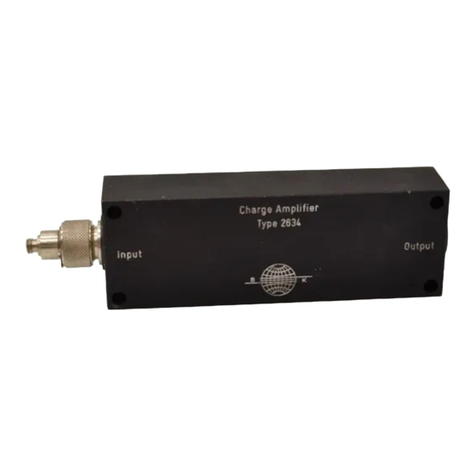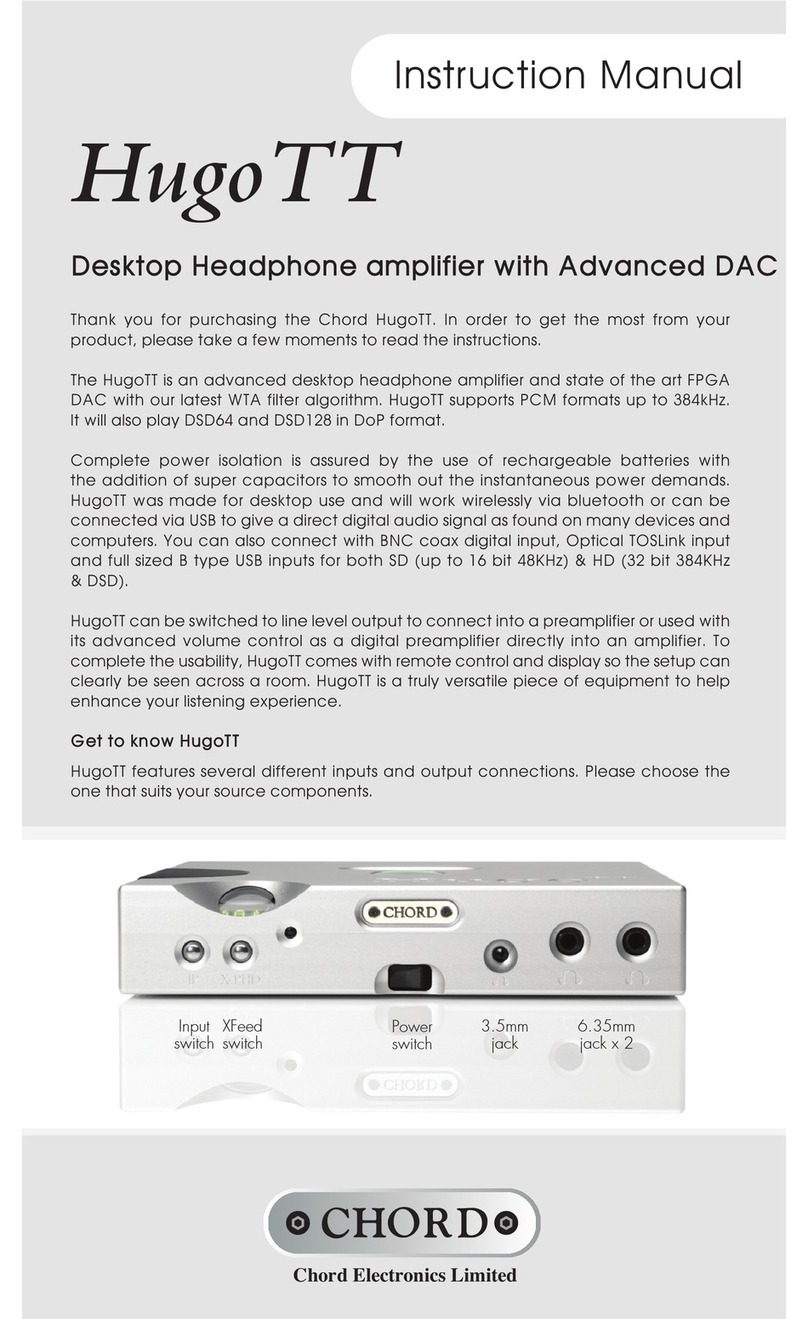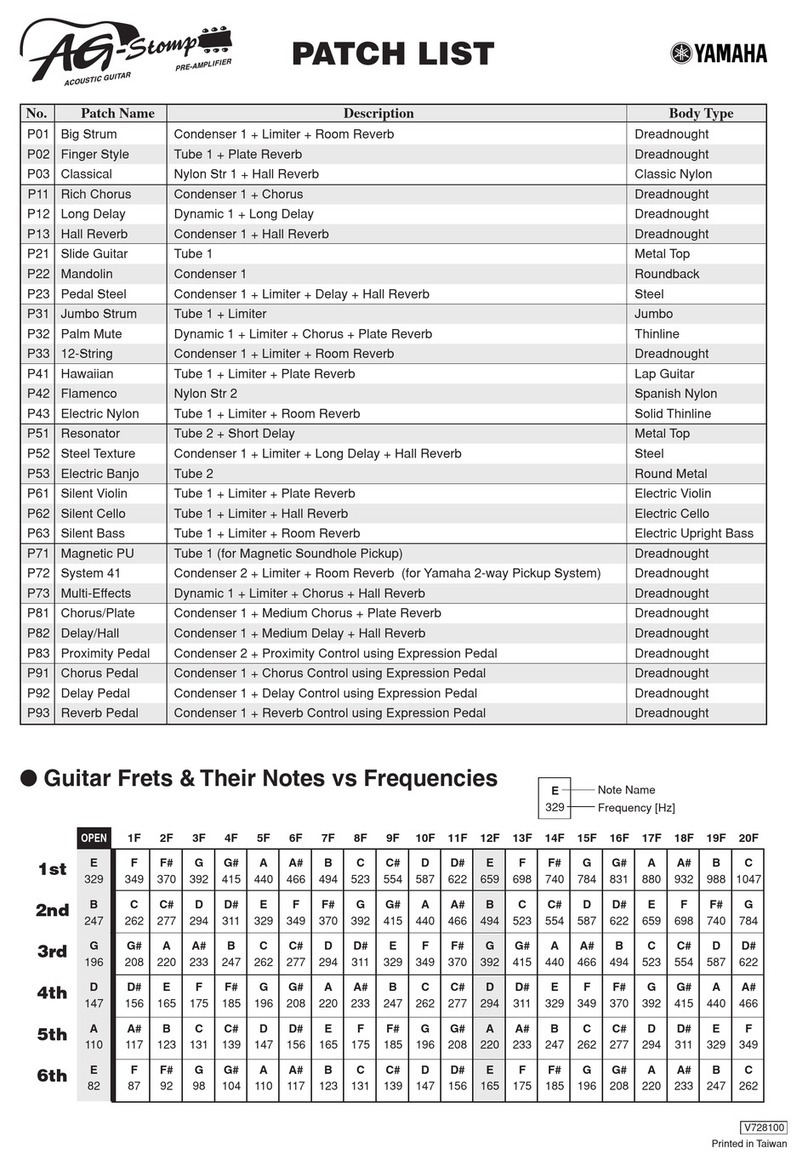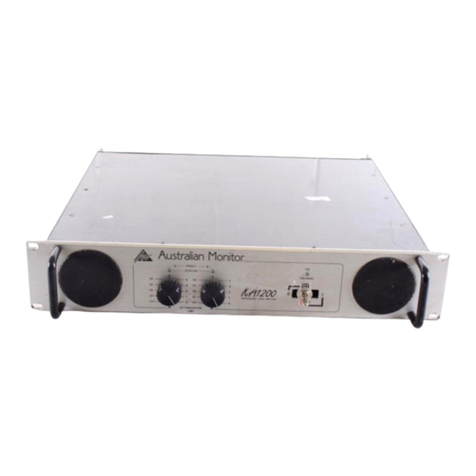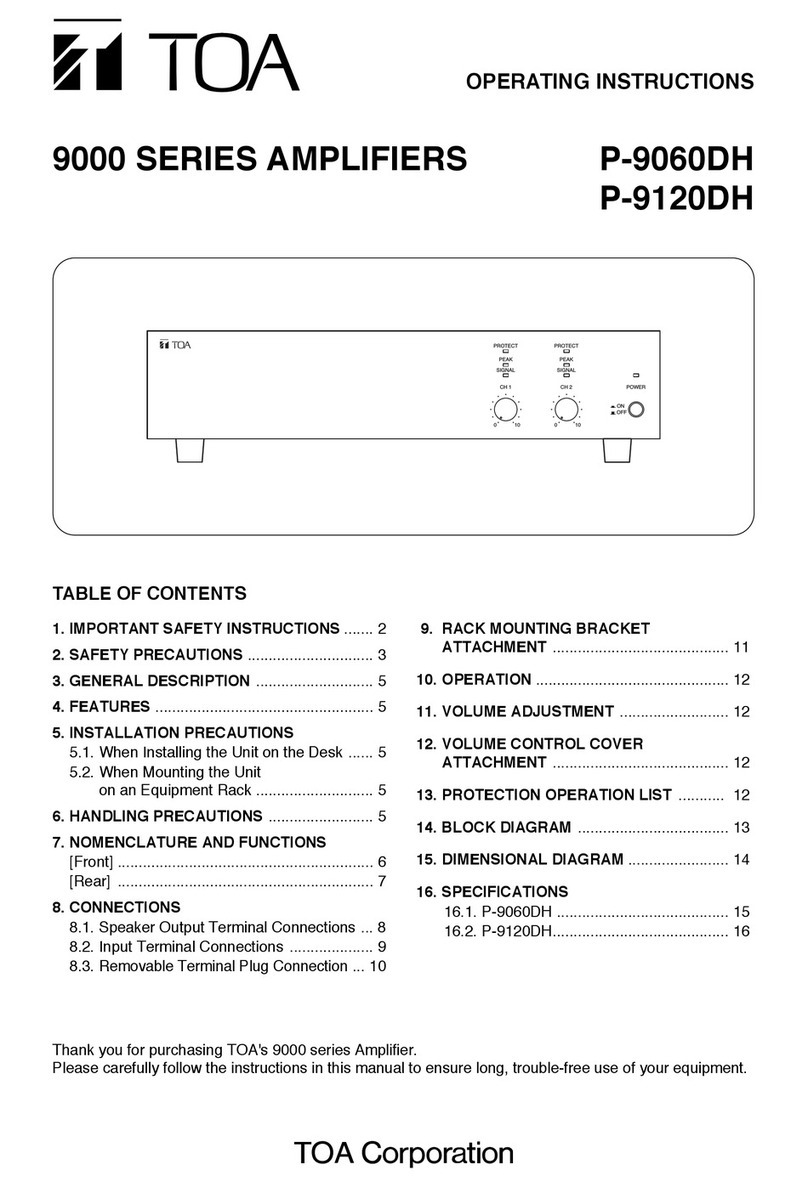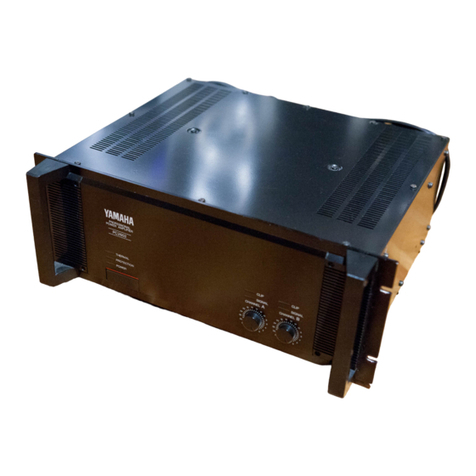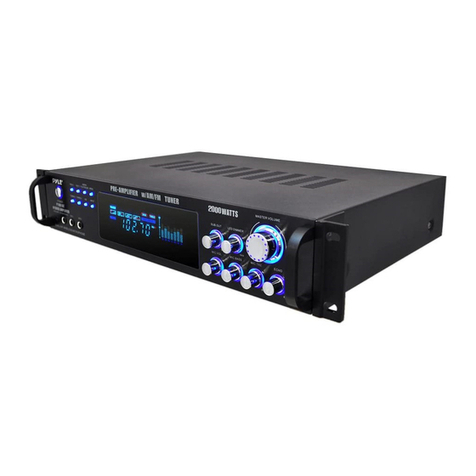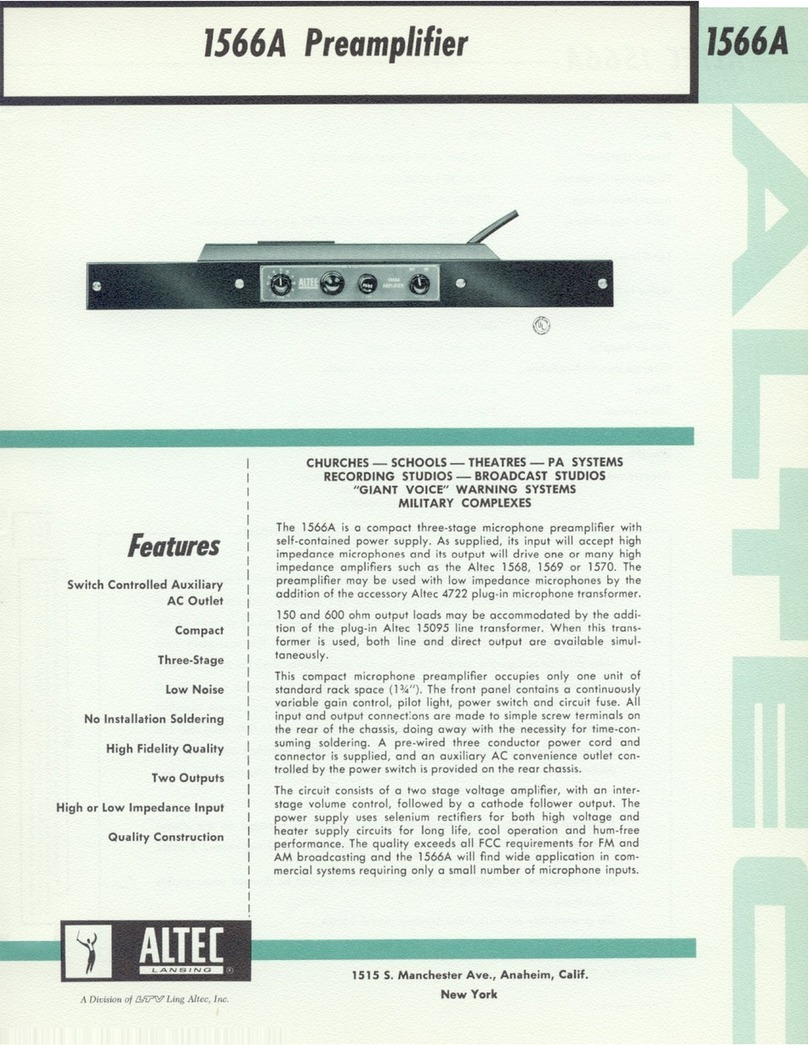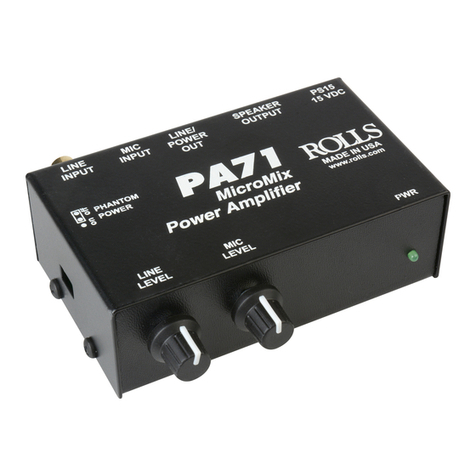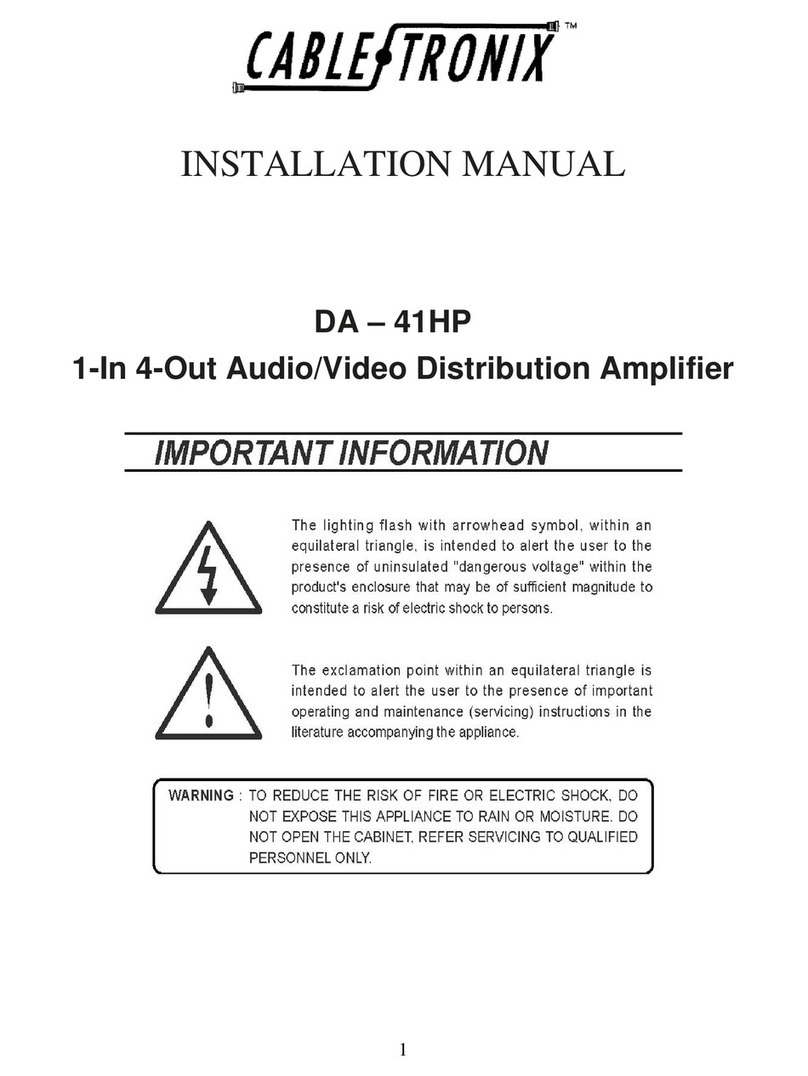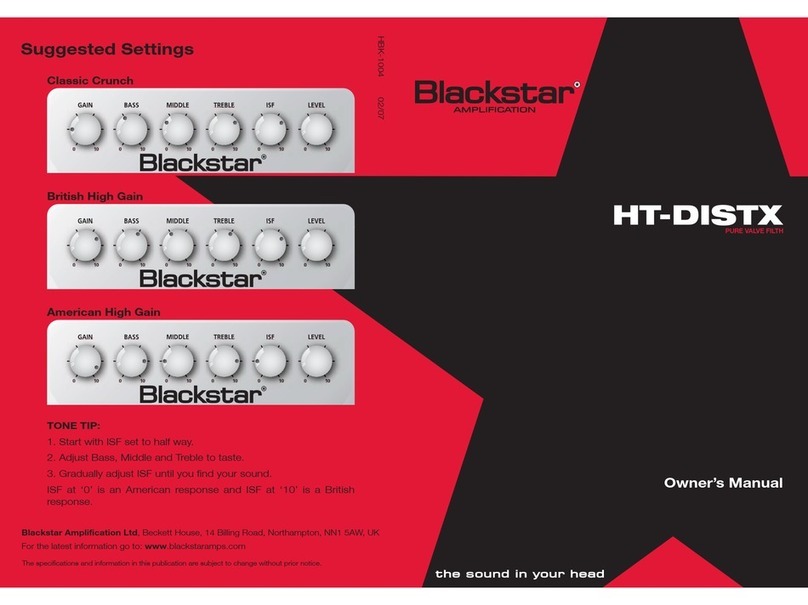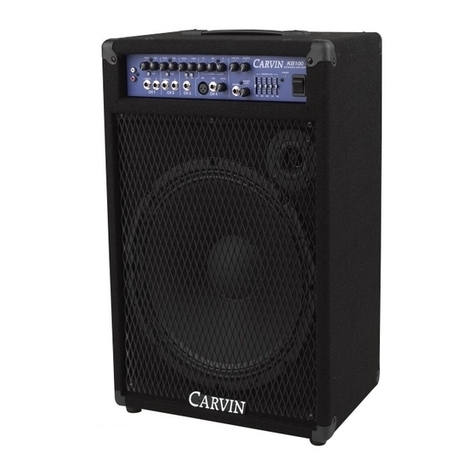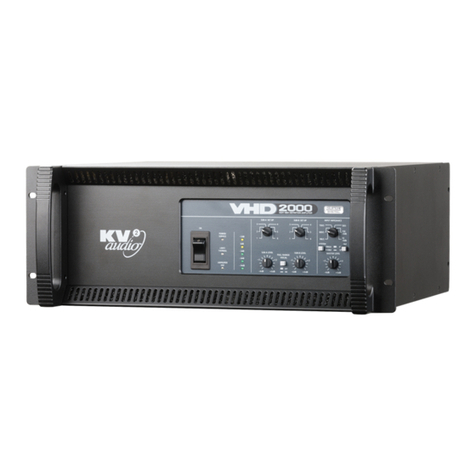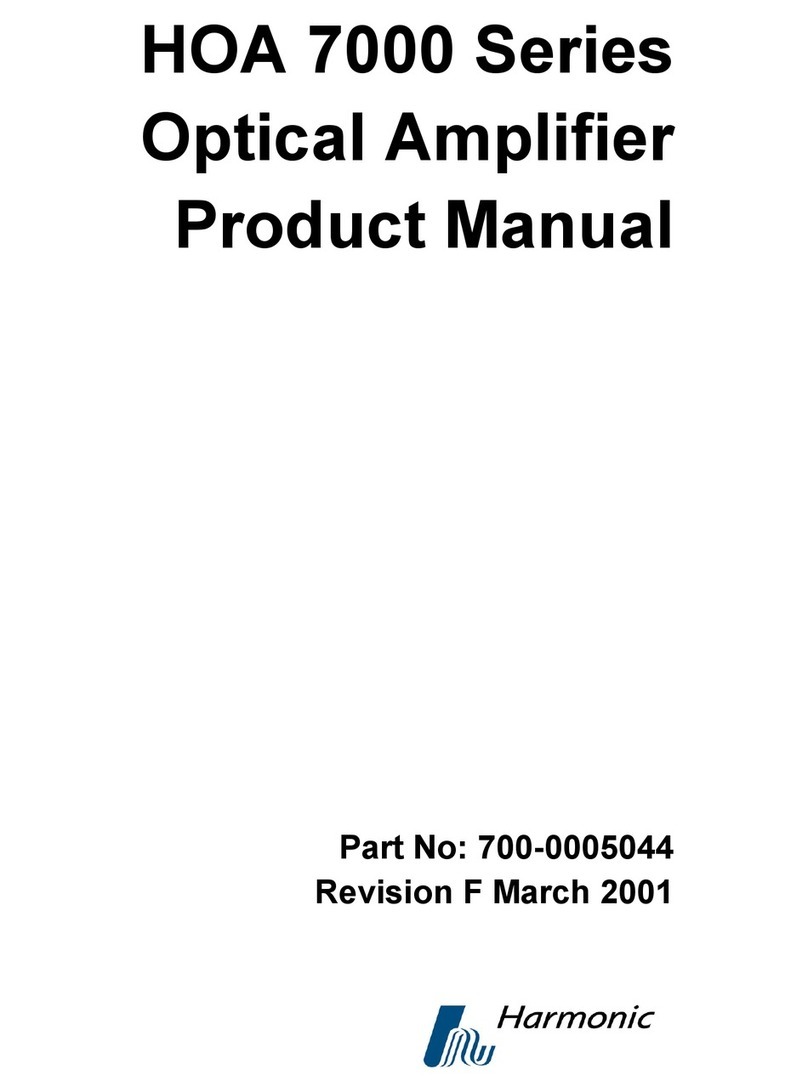TRU Audio D16 User manual

User Manual - D16

1

2

3
Box Contents
• D16 amplifier
• Power cord
• Rack ears
• Manual
Features
Front Panel
• Trigger in & out
• Ground lift
• On-Off-trigger
• Class D digital amplifiers
• Anti-clipping protection circuitry
• Fault safety circuitry
• Front panel LED lights
• 2 Internal fans
• Zone input gain control
• Max output with ALL channels driven
• 8 RCA subwoofer outputs
• Speaker level subwoofer capability
• Adjustable subwoofer crossovers per zone
• Bus 1 & Bus 2 inputs and outputs
• Signal sense
• Stereo & bridge mode
At TruAudio the “Sound of Innovation” is not just a tagline, they are words we live by. The D16 amplifier
is a revolutionary amplifier breaking the mold of the standard amplifier. The D16 amplifier has sixteen
channels of high performance power along with eight subwoofer RCA outputs with a built in adjustable
crossover. We found the number one thing customers want from their distributed audio system is sound
quality and realism. By adding a TruAudio passive subwoofer to our D16 amp you now can add great
sound and bass discreetly and easily to any room. The D16 is full of state of the art and advanced
features that can be customized to fit most any system.
Power switch on the front of the D16 will light “blue” when the D16 is on, the light will be off when the
amplifier is powered off, and red when in standby. We have placed an LED light ladder on the front of the
amplifier to help you quickly identify the state of the amp by zone.
1 2 3
1. Power button 2. Clipping status LED’s 3. Channel status LED’s

4
Rear Panel
Front Panel LED Lights
Quick Reference Chart
NOTE: If the channel LED is RED you have a fault and need to fix that issue. Once fixed the light should
go back to BLUE if the zone is being used or OFF if the zone is not being used. Fault is typically the
positive and negitive speaker wire touching.
NOTE: If one of the clip LED lights is “flashing,” then that zone is clipping. To resolve this, you need to
lower the input source volume and/or lower the gain for that channel until the LED stops flashing.
1. Bus In
2. Bus Out
3. Line In (Analog)
4. Input Switch
5. Input Gain Knob
6. Stero/Bridge Switch
7. Subwoofer Crossover
8. Subwoofer RCA Out
9. Phoenix Speaker Connector
10. Ground Lift Switch
11. On/Auto/Trigger
12. Input Voltage Switch (110v/220v)
13. Trigger In/Out
14. AC Fuse
15. AC Input
T15AL 250VAC FOR 115VAC 60Hz
T10AL 250VAC FOR 230VAC 50Hz
LED COLOR
POWER
CHANNEL
CLIP
BLUE
RED
OFF
BLUE
RED
OFF
RED
OFF
Unit is on
Unit is in standby, no signal
Unit is off
Zone is active
Zone fault
No signal
Source is set to high
Source is set correctly
DESCRIPTION
1 3 4 6
2 7 8 9
10 11 12
13 14 15
5

5
On/Auto/Trigger
BUS 1 & 2 Inputs
On Mode (Recommended):
All zone LED lights will be off until an audio signal is introduced to the BUS or LINE-IN inputs.
When an audio signal is present, the amplifier will turn on immediately and the appropriate zone
lights will turn blue to indicate the zone or zones that are on. After about 20 minutes without an
audio signal the zone or zones will enter a low power mode. Zone LED lights will remain off until
each zone senses an audio source to the zone input.
There are “right” and “left” RCA style connectors labeled as “1” & “2”. These inputs are used for
sending a single audio source (i.e. CD, Tuner, MP3 etc.) to more than one zone.
BUS 1 & 2 Outputs
There are “right” and “left” RCA style connectors labeled as “1” & “2”. These outputs are used to
loop the audio source that is connected to the “BUS INPUTS” out to a second amplifier.
Zone Line Inputs
These RCA style input connectors are the audio inputs for each individual channel of the amplifier.
Attach your audio sources here. We suggest using a good quality RCA patch cable for best
performance. The RCA inputs are labeled “Left” and “Right”.
Auto Mode:
When the amplifier detects an audio signal the D16 will turn on. After approximately 20 minutes
without an audio signal the amplifier will go into standby mode. When the D16 is in sleep mode
there will be a 10 to 15 second delay to power the amplifier back on and play an audio signal.
Trigger Mode:
NOTE: The amplifier has a 10 second power cycle period before it will play an audio signal if
either the Auto or Trigger are selected. This is normal and required to comply with the EU < .5
WATT ERP directive.
NOTE: By using the BUS INPUTS/OUTPUTS together you can run “MONO” to all channels of the
amplifier. Discussed later in this manual.
The amplifier will only turn on and off when using the 12v trigger input and/or output. There will be
a few second power cycle period from the time power is applied to the trigger to the time an audio
signal is played. For general use it is recommended that the amplifier be left in the "ON" position.

6
Stereo Mode:
Stereo mode will play the audio entering the amplifier through the left & right input channels out to
the left & right speakers attached to that zone.
Bridge Mode:
Bridged mode will take the audio entering the LEFT channel of the zone ONLY and send it out of
the outermost ports of the phoenix connector.
Bridged mode will output up to 150w @8Ω.
Bridge mode must see an 8Ω signal, lower than
8Ω will damage the amplifier.
ST/BR Switch (Stereo/Bridge)
Use this switch to change between stereo and bridge mode for each zone.
Crossover Knob for Subwoofer RCA
This knob is used to adjust the crossover frequencies (40Hz to 140Hz) sent out of the “SUB OUT”
RCA jack.
Gain Adjustment
This knob adjusts the output level for each zone independant. Set the input gain control to your
desired level and make sure the speakers are not distorting at very loud volumes.
Ground Lift Switch
If there is a problem with a 60Hz ground loop with this amplifier due to poor house electrical
grounding, this switch can sometimes help eliminate the noise or hum problem that can occur.
Speaker Terminals
These Phoenix type terminal connectors are used to connect the speakers to the amplifier. Max
gauge of speaker wire is 14 AWG.
Anti-Clipping Protection Circuitry
The anti-clipping circuitry will automatically reduce the output level going to the speaker from the
amplifier when it senses the volume is too loud. The RED clipping light will flash until you lower the
source or the input gain control for that zone.
Fault Safety Circuitry
If by accident the speaker wires cross (touch each other) the blue channel LED light for that zone
will turn solid RED. No sound will come from any speakers attached to the faulted wires until you
correct the fault (seperate the touching wires). No damage will come to the Amp.

7
AC Voltage
Sample Home Installation
115V Switch Position 220V Switch Position
Input AC voltage switch is set to 115V, if using this amplifier in a location where you will be using
220V than you MUST undo the screws holding the clear glass over the voltage switch and push
the slider to the right to the 220V setting.
INPUT
OUTPUT
WHOLE HOUSE AUDIO MATRIX
ROOM 1 ROOM 2 ROOM 3 ROOM 6
ROOM 4
SPEAKERS
SUB AMP
SPEAKERS SPEAKERS
TRUNAMI
SUBWOOFER
SPEAKERS
SPEAKERS
SPEAKERS
IC-SUB8
SUBWOOFER
ROOM 5
TRU-S500DSP

8
Function
Standard Speaker Installation
• Attach your source to the “line in” or “bus in”
• Set the input switch to the appropriate source.
• Set the ST/BR switch to ST (stereo)
• Now attach your two speakers to the phoenix
connector, left & right channel.
Attach your source to the “line in” or “bus in”
Set the input switch to the appropriate source.
Attach a single RCA wire from the “SUB OUT” of
that zone to a powered subwoofer.
Turn the crossover knob clockwise all the way to the
140Hz position on the D16. Now use the crossover
on your powered subwoofer or subwoofer amplifier.
•
•
•
•
Subwoofer Wiring
(1) Using the Subwoofer RCA output to a stand alone powered subwoofer.
Attach your source to the “line in” or “bus in”
Set the input switch to the appropriate source.
Attach a single RCA wire from the “SUB OUT” for
that zone to the next zone “line in” LEFT channel.
Set the first zone to “ST” and attach your two
speakers to the phoenix connector.
Next set that subwoofer zone to “BR” Bridged and
attach the subwoofer wires to that zone to the
outermost portions of the phoenix connector. (the
bridged terminals)
Now play music and adjust the crossover and the
gain knobs on both zones till you get the music and
subwoofer sounding the way you like. Use your
source volume to increase and decrease the sound.
•
•
•
•
•
•
(2) Outputting a subwoofer signal over speaker wire to the TruAudio IC-SUB-8
passive subwoofer
There are multiple ways to configure setup of a subwoofer on the D16.
1. To an active powered subwoofer or subwoofer amplifier
2. To a passive subwoofer
SOURCE
SOURCE
SOURCE
SPEAKERS
SPEAKERS
SPEAKERS
SUBWOOFER
SUBWOOFER
(Diagram shows input set to “line in”)
(Diagram shows input set to “line in”)

9
•
•
•
•
•
•
•
(2a) Adding multiple IC-SUB 8 subwoofers
Attach your source to the “line in” or “bus in”
Set the input switch to the appropriate source
Set the speaker zone to “ST” Stereo
Attach the speaker wires for your speakers
From the first zone attach a single RCA to dual
RCA cable from the “SUB OUT” for that zone to
the next zone “line in” LEFT & RIGHT channel.
Next set that subwoofer zone to “ST” Stereo and
attach each subwoofer wires to the phoenix
connector.(left and right)
Now play music and adjust the crossover and the
gain knobs on both zones till you get the music
sounding the way you like. Use your source
volume to increase and decrease the sound.
This configuration of 2 subwoofers will not be any
louder than 1 subwoofer but it will enable you to
spread out the bass more evenly in a large room.
(3) Output a subwoofer signal over speaker wire to (TWO) TruAudio IC-SUB 8
from a single zone.
SOURCE
NOTE: The subwoofer channel MUST BE
switched to “ST” position, not “BR” (in this
example).
SPEAKERS SUBWOOFERS
SPEAKERS
SUBWOOFERS
(Diagram shows input set to “line in”)

10
•
•
•
•
•
•
•
Attach your source to the “line in” or “bus in”
Set the input switch to the appropriate source.
Set the speaker zone to “ST” Stereo
Attach the speakers to that zone
From the first zone attach a single RCA cable
from the “SUB OUT” for that zone to the next zone
“line in” LEFT channel.
Next set that subwoofer zone to “ST” Stereo and
attach the BP-SUB-12 subwoofer wires to the left
channel of the phoenix connector.
Now play music and adjust the crossover on the
first zone and the gain knobs on both zones till
you get the music sounding the way you like. Use
your source volume to increase and decrease
the sound.
(4) Output a subwoofer signal over speaker wire to (ONE) TruAudio BP-SUB 12 at 4Ω
NOTE: The subwoofer channel MUST BE
switched to “ST” position, not “BR” (in this
example).
NOTE: The speakers must be 8Ω each.
SOURCE
Retrofit application (Adding a subwoofer to a room that has only two speakers)
Attach your source using a single RCA “Y” cable
to the “line in” left channel on ZONE 1
Run a single RCA wire from the “SUB OUT”
ZONE 1 to ZONE 2 “line in” on the Left
channel
Set Zone 1 to “ST” and ZONE 2 to “BR”
Attach both of your previously installed
speakers to the same wire coming from the left
channel.
Attach the newly installed IC-SUB 8 to the other
speaker wire and now attach that wire to ZONE 2
to the BRIDGED outputs.
Now play music and adjust the crossover on the
first zone and the gain knobs on both zones till
you get the music sounding the way you like. Use
your source volume to increase and decrease
the sound.
•
•
•
•
•
•
SPEAKERS
4Ω SUBWOOFER
8Ω SPEAKERS
SUBWOOFER
SOURCE
(Diagram shows input set to “line in”)

11
Wiring a room with four 8Ω speakers and one In-Ceiling Sub: using 2 zones of the D16 amplifier
Attach your source using the “line in” or “Bus in”
Run a single RCA cable from the “SUB OUT”
ZONE 1 to ZONE 2 “line in” on the left channel
Set Zone 1 to “ST” and ZONE 2 to “BR”
Attach all 4 of your speakers to zone 1 (2
speakers to the left channel and 2 speakers to
the right channel)
• NOTE: All 4 speakers MUST be 8Ω
Attach the installed IC-SUB 8 to ZONE 2
(BRIDGED).
Now play music and adjust the crossover on the
first zone and the gain knobs on both zones till
you get the music sounding the way you like.
Use your source volume to increase and
decrease the sound.
Special NOTE: You can add additional IC-SUB-8’s in
the ceiling for more bass. See page 9 for details
•
•
•
•
•
•
How to wire the D16 to output a mono signal using the BUS inputs & outputs.
Mono Wiring
Using a “Y” cable, combine the audio signal (left
& right) together from your source and run it to
the BUS 1 input “LEFT”.
Use a single RCA cable and attach the BUS 1
out “LEFT” to BUS 1 in “RIGHT”.
Now you can hear that audio source come
through any speaker by choosing “BUS 1” for
that channel.
Special NOTE: Mono is not poor sound (like in the
old days) it is just a lack of separation of both left
& right channels. Both left & right channels are
combined together and heard through one
speaker. Best used for outdoor systems or indoors
where the listener may move around and NOT be
located in the sweet spot between both speakers.
•
•
•
SOURCE
SPEAKERS
SPEAKERS
SUBWOOFER
SOURCE

12
Speaker Subwoofer
Cooling
Adjusting the D16 Amplifier
In order to keep the D16 running smooth it must have proper ventilation. As with all electronic
equipment heat is the enemy and will shorten the life. The D16 has ventilation ports on all sides
along with 2 fans to help keep it running cool. The D16 must have 2.5” of space on both sides and
1U (1.75”) above and below the amplifier. If placing the D16 in a cabinet you MUST make sure the
cabinet is vented.
Gain Control
The gain knob controls
the input signal and in
turn, the volume output
from the speakers.
Crossover Control
The crossover knob will
set the crossover
frequency sent from the
“SUB OUT.”
Gain Control (Second Zone)
Use this gain knob to
adjust the sound level for
the subwoofer.

13
The TruAudio D16 is stable to 4Ω, if the amplifier goes below 4Ω’s there is a good chance
the zone will fail:
Standard Wiring
1 Speaker 1 Speaker 1 Speaker
Bridged Wiring
Troubleshooting
Impedance
1CH 1CH
To fix you will need to bring the impedance back up to 4Ω or greater
Note: Most 8Ω speakers have TRUE impedance of slightly less than 8Ω which could sometimes
cause an issue.
If you are in Bridge mode and the speaker stopped working.
You need to check that the wiring is correctly connected to the phoenix connector and the speaker
has an 8Ω rating. Speakers with les than an 8Ω rating can NOT be bridged.
If your speakers are very loud and the IC-SUB-8 subwoofer is not:
You can turn the input gain on the speakers down and turn the input gain up for the subwoofer.
There is a delay of about 10 - 15 seconds to hear music from the time you hit play:
SPEAKER IMPEDANCE
1 - 8Ω Speaker 1OK
1 - 8Ω Speaker 2OK
1 - Below 8Ω Speaker 2NOT OK
1 - 8Ω Speaker + 1 - 8Ω Speaker
1 - 4Ω Speaker
1OK
1OK
STANDARD WIRING # OF CHANNELS
SPEAKER IMPEDANCE BRIDGED WIRING # OF CHANNELS
This happens because of amplifier standards we must be in compliance with. If you would like to
avoid the delay you can leave the amp in “ON” mode. (when the D16 is not playing music for about
20 minutes it will automatically go into low power mode)
2CH

14
Specifications
Class D Amp / 16 channel
8 Subwoofer RCA outputs
75W @ 8Ω all channels driven: Full power (20A residential service recommend)
150w @ 4Ω
Bridge - 150w @8Ω ( do not bridge under 8Ω, doing so will damage the amp)
A & B bus: In and Out
Line in per channel
Gain knob per zone
Stereo / Bridge switch per pair
Removable rack ears: Fits 2U rack space
THD < .9 @ 8Ω
THD < 1% @ 4Ω
Freq. Range : 20Hz – 20kHz
Signal to Noise - > -90dB (A weighted at full output)
Input voltage: AC-100-120V 60Hz / AC220-240V 50Hz Manual Switching
AC fuse: Replaceable; T15AL 250VAC FOR 115VAC 60Hz, T10AL 250VAC FOR 230VAC 50Hz
Weight: 35.15lbs
Dimensions: H: 4.1" (105mm) x W: 16.8" (427mm) x D (with RCA ports):13.5” (343mm)
•
•
•
•
•
•
•
•
•
•
•
•
•
•
•
•
•
•
Subwoofer out – (L & R signal summed per zone sent out from “RCA Sub Out” per zone)
Crossover knob – adjustable from 40Hz to 140Hz
Freq. Range – 40Hz to 140Hz
•
•
•
D16
RCA (Subwoofer Out)
It is the policy of TRUAUDIO to continuously incorporate improvements into our products. All specifications are subject to change without notice.
If you have any questions regarding this or any other TRUAUDIO products, please call 1-888-858-1555, Monday – Friday, 7:00 am – 6:00 pm MST.
TRUAUDIO Speaker Systems, Hurricane, Utah, 84737
Office: 435.986.1574 Fax: 435.251.9815
USER MANUAL

Table of contents
Other TRU Audio Amplifier manuals
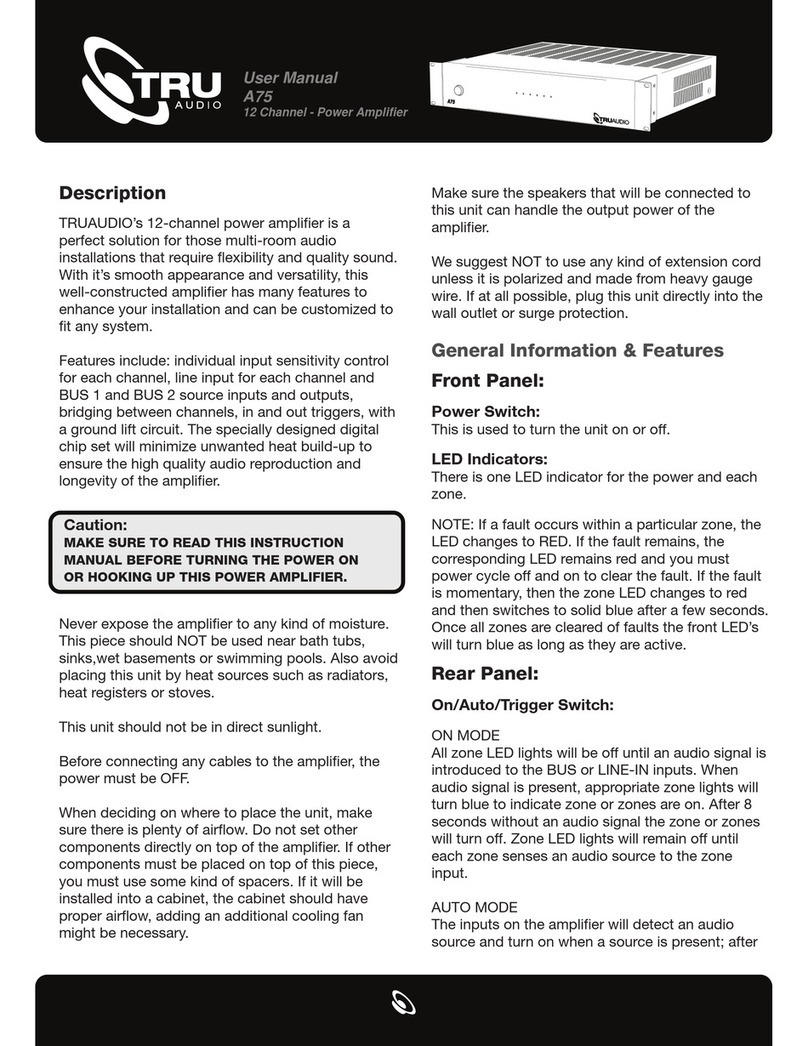
TRU Audio
TRU Audio A75 User manual
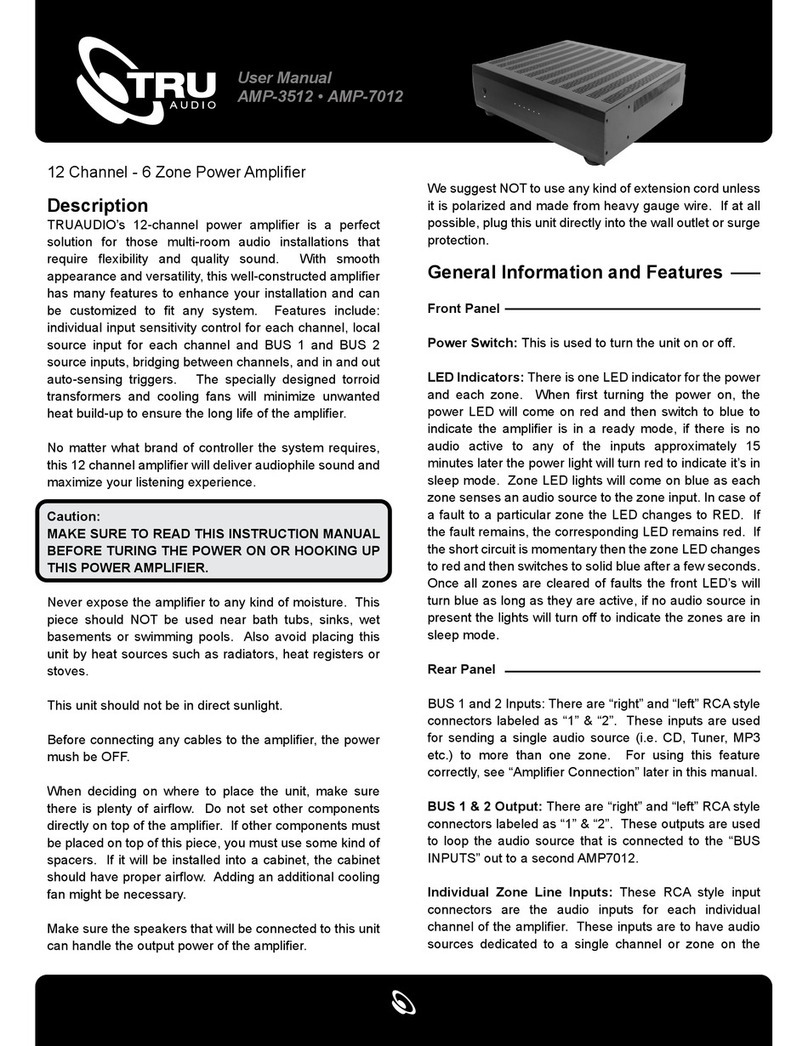
TRU Audio
TRU Audio AMP-3512 User manual
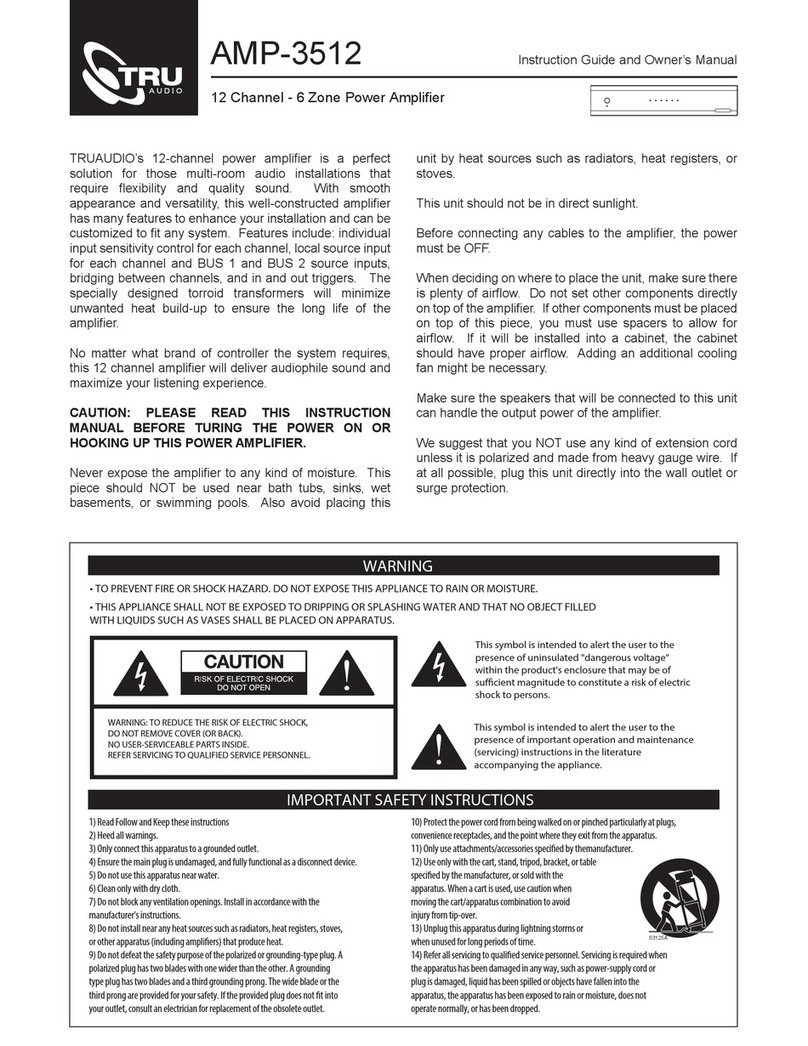
TRU Audio
TRU Audio AMP-3512 User manual
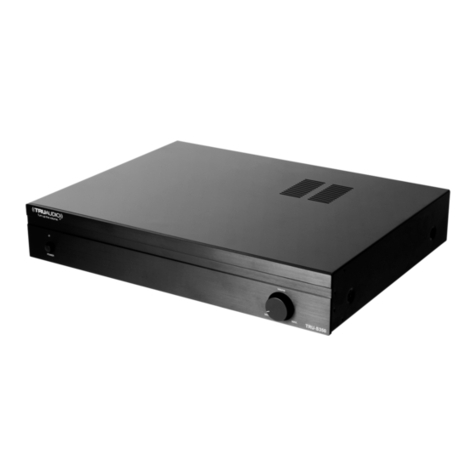
TRU Audio
TRU Audio TRU-S350xi User manual

TRU Audio
TRU Audio T100 User manual
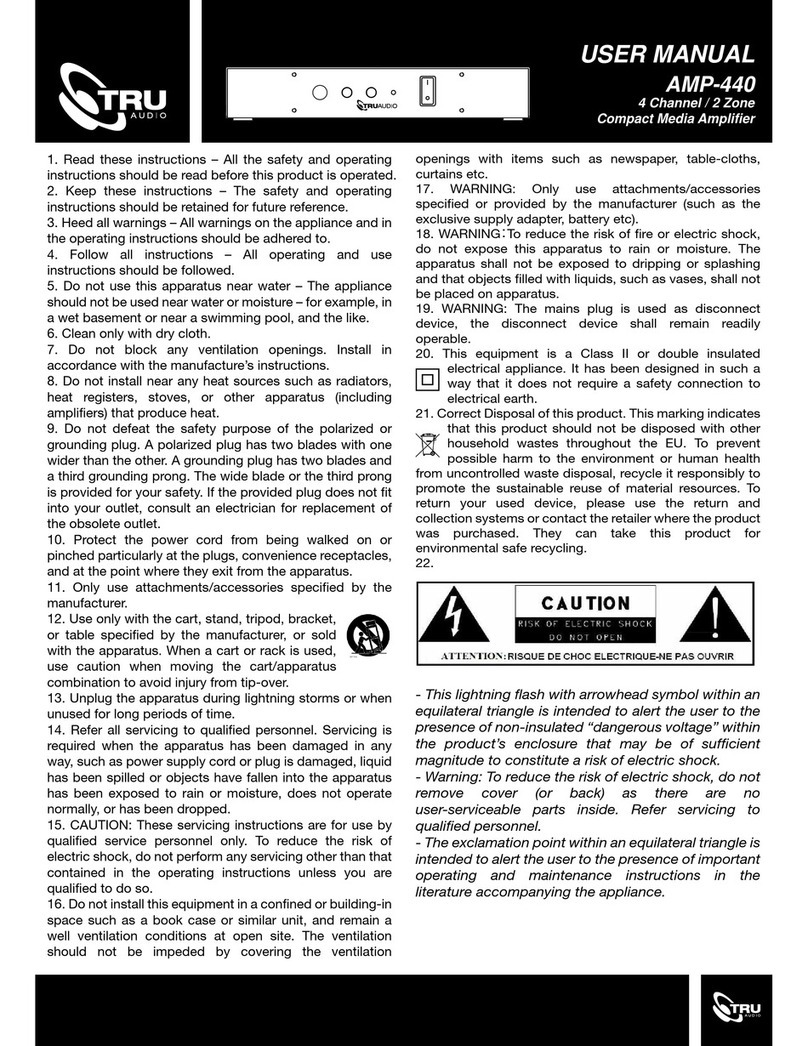
TRU Audio
TRU Audio AMP-440 User manual
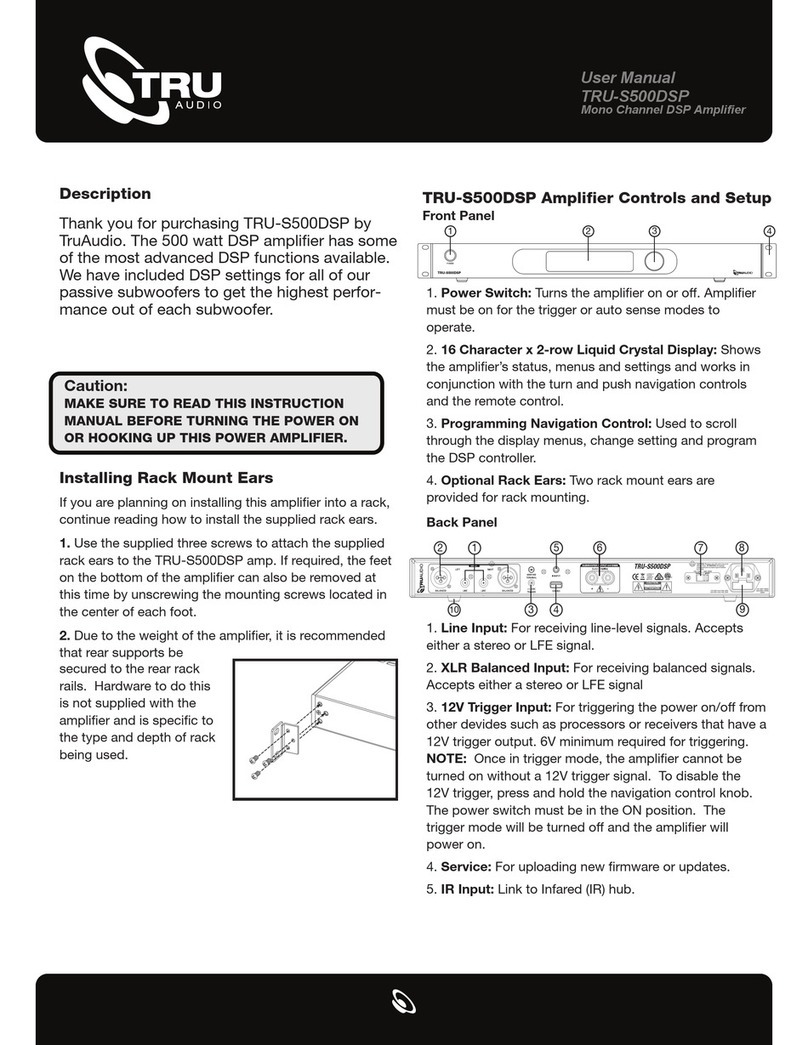
TRU Audio
TRU Audio S500DSP User manual
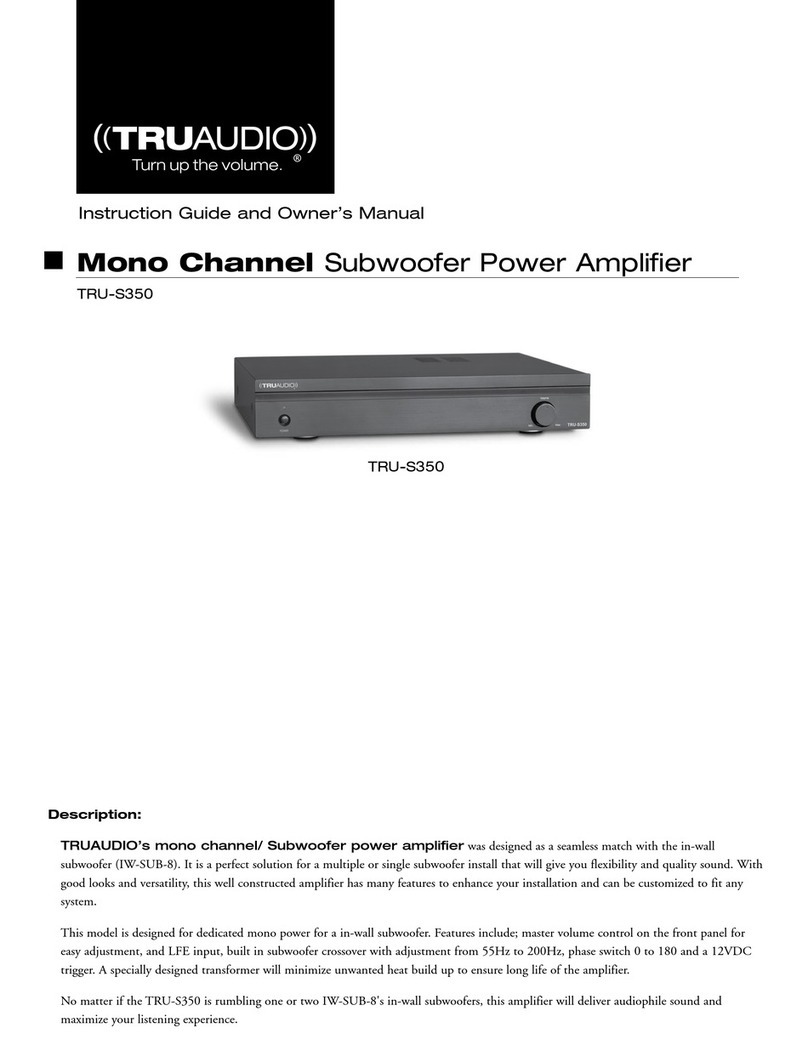
TRU Audio
TRU Audio TRU-S350 User manual
